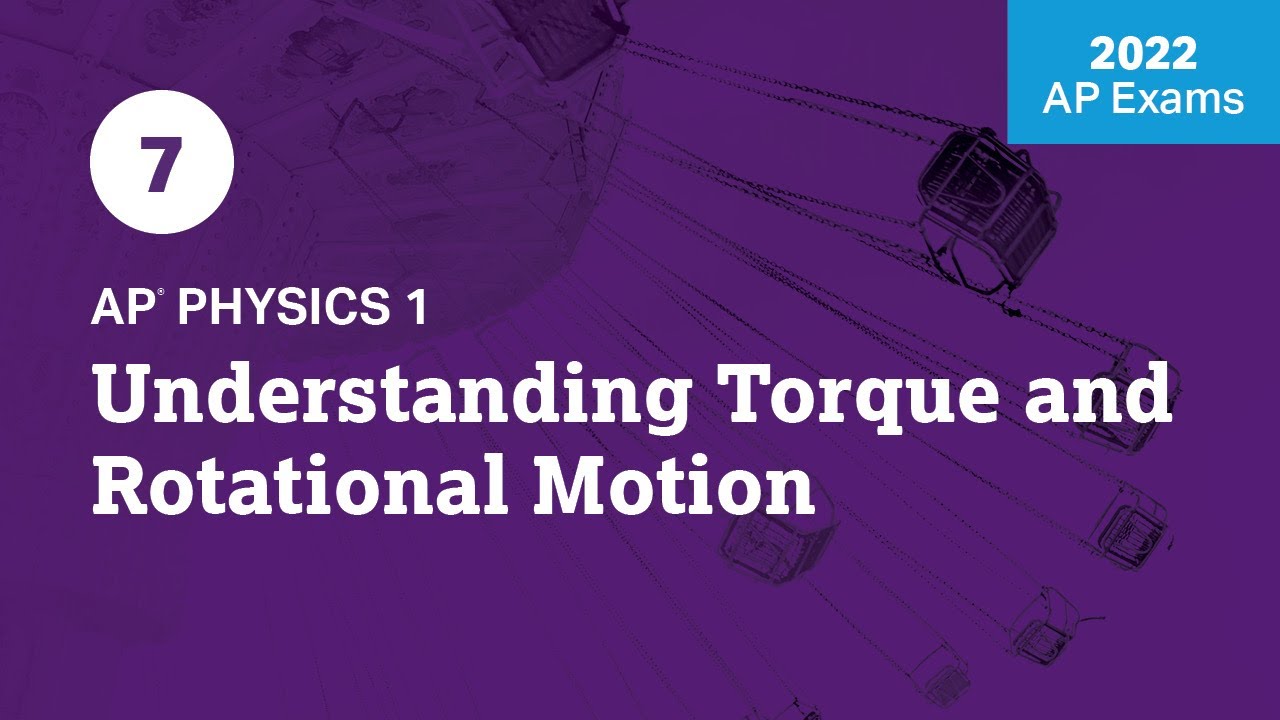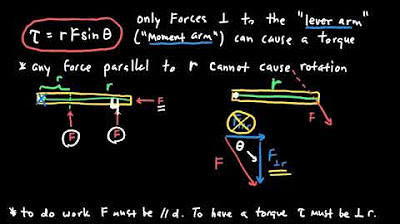Gyroscopic Precession
TLDRIn this enlightening video, Derek from Veritasium explores the fascinating concept of gyroscopic procession with the help of Destin's 'Smarter Every Day' series. He delves into the fundamentals of vectors and torque, using a wheel as a practical demonstration to explain how angular momentum is affected by applied forces. The experiment showcases the interplay between torque and angular momentum, highlighting the directional changes induced by rotational motion. Derek's engaging explanation and hands-on approach aim to demystify complex physics concepts, leaving viewers with a deeper understanding and appreciation for the principles governing our physical world.
Takeaways
- 🎓 Derek from Veritasium discusses gyroscopic procession and its mind-blowing nature.
- 🔍 The video is set at the University of Sydney where Derek plans to use lecture demo equipment to explain gyroscopic procession.
- 📐 Vectors are introduced as fundamental to understanding physics, with examples like momentum and force.
- 🔄 A torque, which is a force times the distance from the rotating axis (R), changes the angular momentum of an object.
- ✋ The right-hand rule is used to determine the direction of torque, which is perpendicular to the force applied.
- 🏎️ A demonstration involves a wheel hanging from a rope, showing how torque due to the wheel's weight causes it to swing.
- 🔄 When a spinning bicycle wheel is introduced, its angular momentum is altered by the applied torque.
- 🎥 The bicycle wheel's angular momentum vector points one way, but the torque vector pushes it in another direction, causing rotation.
- 🚫 Friction in the wheel demonstrates the real-world challenges of maintaining ideal physical conditions.
- 📺 Derek encourages viewers to watch more videos about helicopter physics and to check out his channel for similar educational content.
Q & A
What is gyroscopic procession?
-Gyroscopic procession is a phenomenon related to the motion of rotating bodies, where the resistance to change in orientation of a rotating system is demonstrated. It's a concept that can be quite fascinating and mind-blowing, as it involves complex physics principles.
What is the significance of vectors in physics?
-Vectors are crucial in physics because they have both magnitude and direction. Examples of vectors include force and momentum. Understanding vectors is essential for explaining and predicting the behavior of objects in motion, as it allows us to consider not just how much but also in which direction forces are acting.
How does applying torque affect angular momentum?
-Applying torque to an object results in an increase in its angular momentum in the direction of the applied torque. Torque is calculated as the product of the force applied and the distance from the rotating axis (moment arm), and it causes the object to rotate around its axis, thus changing its angular momentum.
What is the right-hand rule used for in this context?
-The right-hand rule is used to determine the direction of the torque vector. By pointing the fingers of the right hand in the direction of the radius from the turning axis and curling them towards the direction of the applied force, the thumb points in the direction of the torque.
What happens when a wheel is subjected to a torque in the context of the video?
-When a wheel is subjected to a torque, it experiences an increase in angular momentum in the direction of the torque. This causes the wheel to rotate, and if the torque is maintained, the wheel will continue to rotate with an increased angular momentum.
How does the weight of the wheel create a torque in the experiment?
-The weight of the wheel creates a torque because the force due to gravity pulls it downward. This force is applied at a distance (the radius) from the pivoting point, creating a torque that acts to rotate the wheel around the pivot.
What is the expected behavior of the wheel when it is released after being spun up?
-When the wheel is released after being spun up, it already has angular momentum. Applying a torque in the opposite direction of the wheel's rotation will cause the wheel to precess, or swing around, in a direction that is perpendicular to both the angular momentum and the applied torque.
What is friction's role in the experiment?
-Friction plays a significant role in the experiment as it opposes the motion of the wheel. In the video, the friction between the rope and the wheel's axle, as well as air resistance, can cause the wheel to slow down and eventually stop rotating.
How does the bicycle wheel in the video demonstrate the concept of angular momentum?
-The bicycle wheel demonstrates the concept of angular momentum by maintaining its rotation even when external forces, like the torque from the weight of the wheel, are applied. This shows that the wheel's angular momentum is conserved unless acted upon by an external torque.
What additional resources are available for learning about gyroscopic procession and helicopter physics?
-For further understanding of gyroscopic procession and helicopter physics, one can refer to Destin's series on 'Smarter Every Day' and Derek's channel 'Veritasium', where more videos on similar topics are available.
Outlines
🤔 Introduction to Gyroscopic Precession and Vector Concepts
The paragraph introduces Derek from Veritasium, who is fascinated by the concept of gyroscopic precession, as explored by Destin on Smarter Every Day. Derek is at the University of Sydney to use lecture demo equipment to explain gyroscopic precession. He begins by discussing vectors in physics, which have direction, such as momentum and force. Using a cart as an example, he explains how applying a force can change the cart's momentum. He then relates this to rotating bodies, where a torque (force times the distance from the axis of rotation) increases an object's angular momentum in the direction of the torque. Derek uses the right-hand rule to define the direction of torque and explains how it increases the angular momentum of a wheel in a specific direction. He sets up an experiment with a hanging wheel to demonstrate how torque affects rotational motion, showing that angular momentum requires the system to swing in a particular direction.
Mindmap
Keywords
💡Gyroscopic procession
💡Vectors
💡Torque
💡Angular momentum
💡Right-hand rule
💡Friction
💡Rotational motion
💡Pivoting point
💡Moment of inertia
💡Helicopter physics
💡Veritasium
Highlights
Derek from Veritasium discusses gyroscopic procession and its mind-blowing nature.
The series by Destin on Smarter Every Day and the topic of helicopters are being followed by Derek.
Gyroscopic procession is a concept that continues to amaze both Derek and Destin.
Derek is at the University of Sydney to borrow lecture demo equipment for his explanation.
Understanding vectors is crucial in physics, as they have direction, such as momentum and force.
A torque increases the angular momentum of an object in the direction of the applied torque.
Torque is calculated as the force applied times the distance from the rotating axis (R).
The direction of torque is determined using the right-hand rule, with the thumb pointing in the direction of the torque.
Angular momentum is increased in the direction of the applied torque when force is applied.
A wheel hanging by a rope creates a torque when released, leading to rotational motion.
The wheel initially swings down due to the torque created by its weight.
If the bicycle wheel is spun up before releasing, it already has angular momentum.
A torque applied to a spinning wheel will cause the angular momentum to rotate in that direction.
Friction can significantly affect the demonstration of rotational motion, as seen with the frictional wheel.
Derek encourages viewers to watch Destin's videos on helicopter physics and to check out his channel for similar content.
The demonstration aims to show the relationship between torque, angular momentum, and rotational motion.
The experiment with the wheel is intended to visually illustrate the principles of gyroscopic procession.
Transcripts
Browse More Related Video
5.0 / 5 (0 votes)
Thanks for rating:





